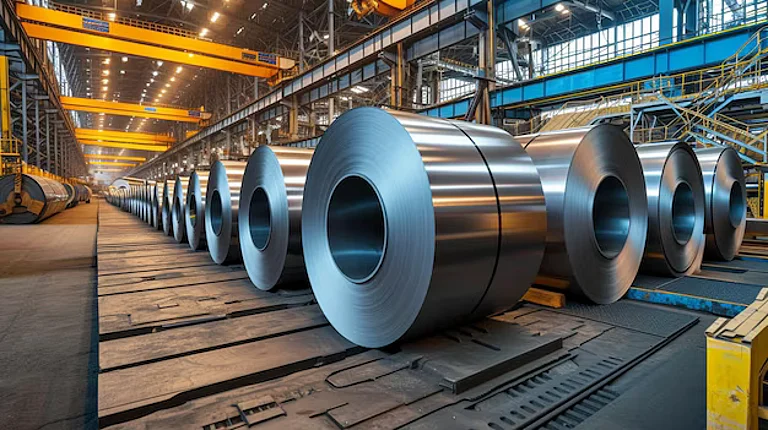Trump Steel Tariffs: 'Who's next?' That's exactly the question emerging markets are asking right now as Trump's tariff call threatens to send shockwaves across major economies.
Trump Trade Wars: More Pain for Metal Stocks as US Slaps 25% Tariffs on Steel Imports
Trump Tariffs: Trade wars continue to heat up as Trump's recent call to impose 25% tariffs on all steel and aluminium imports has triggered a fresh wave of uncertainty in emerging markets
His recent decision to impose a 25% tariff on all steel and aluminium imports has added another layer of stress for major steel importers globally, especially emerging markets like China and India.
While they are not among the top steel exporters to the US, emerging economies have relatively higher tax rates, which means they might attract increased reciprocal tariffs.
As per Nomura, emerging Asian economies (India, Thailand and China) have relatively higher tariff rates (on US exports) and are thus at risk of higher reciprocal tariffs, whereas much of developed Asia (Korea, Singapore) have FTAs with the US and are less at risk.
The Western nation is the largest importer of the commodity, with Canada, Brazil and Mexico as its top suppliers. It is worth mentioning that any kind of tariffs on steel will raise the cost of the commodity in the US as well, but the current focus is placed more on boosting domestic production.
"This is a big deal, the beginning of making America rich again....Our nation requires steel and aluminium to be made in America, not in foreign lands," Trump reportedly said.
"It's time for our great industries to come back to America...this is the first of many," he added.
Who is most at risk?
According to analysts, emerging Asian countries such as India, Thailand and China are more vulnerable to reciprocal tariffs as compared to their more developed counterparts in Asia. This is mainly because these countries impose much higher tariffs on US exports than vice versa. For instance, India charges a 9.5% tariff on US goods, while the US only applies a 3% tariff on Indian goods.
As for China, the country imposes a 7.1% tariff on US goods, while it charges a mere 2.9% tariff on Chinese goods.
Global Rating Agency Moody's recently pointed out that the imposition of 25% tariffs will make things far worse for Indian steel producers. The earnings of major domestic steel producers have already taken a hit owing to high steel imports in India.
More Pressure for Metal Stocks in India?
A volatile global demand coupled with high import volumes of cheaper steel has already added pressure on India's steel industry. This was quite evident in Q3 results as well. Both Tata Steel and Jindal Steel & Power Ltd reported a decline of around 50% in their net profits, causing a sharp plunge in their share price.
With the recent 25% tariff imposition, the outlook might worsen for metal companies and their stock prices. In the last two trading sessions, the Nifty Metal index has plummeted by nearly 3%.

On Tuesday, shares of major steel companies dropped sharply. Shares of the PSU, SAIL, declined by over 2.9% on the National Stock Exchange. Tata Steel and Jindal Steel's share prices also remained highly volatile and were trading in the red territory.
Trade Wars Rewind
In 2018, Trump's administration imposed a similar tariff rate on imported steel and aluminium. The reason remained the same— strengthening the US's domestic steel industry. While the tariffs largely targeted China, which was a major producer of steel, the ripple effects affected other nations as well. As expected, the Dragon Nation imposed retaliatory tariffs on American goods. Other nations were forced to follow the cue as trade wars hardly end up with winners in the game.
The price of steel skyrocketed, and some industries that earlier used to rely on cheaper steel started facing higher input costs, which they eventually passed on to consumers.
While the price of the commodity and other trade tensions started taking a breather as broader negotiations were initiated, things never got fully resolved. From then until now, tariffs have become a powerful negotiating tool in most trade talks.

